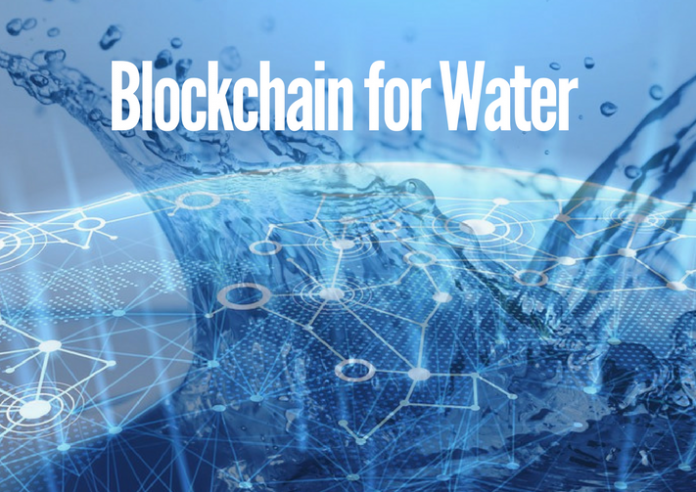As professionals who work in the multidisciplinary water sector, we need to be aware of what new technologies are available, and how they can help us achieve our vision of a water wise world. The High Level Panel on Water have now put forward their Agenda for Water Action, and have highlighted the need for innovative technologies that can resolve the gaps in water data quality, quantity and access. The HLPW propose that “an ambitious global framework is needed to enable public and private sector actors to cost effectively access and use water and hydro-meteorological data.”
By now, chances are that you have heard some of the increasing buzz around blockchain technology. The self professed “most significant technological advance in modern history” is worth investigating more deeply and this series intends to introduce the basics of blockchain and its potential in the sector, particularly with regards to the framework proposed by the HLPW for water data. Understanding blockchain basics can help inform us about applications for this technology across the industry for data verification, communication, exchanges, public participation, transparency, payments and more. Future blogs will dissect different aspects of blockchain technology, using examples of applications, but here I will cover the basics.
The Basics
If you take away one piece of information, it should be this: “Blockchain is a decentralised record of information.” The potential applications of blockchain for the water sector are vast and could help to achieve the HLPW’s recommendation of an accessible, open source and open access way to share water data between public and private sector actors.
Very simply put, blockchain technology is a public ledger of information collected through a network that sits on top of the internet. The way in which this information is recorded is the exciting part, yielding a completely innovative way to document data online. Blockchain allows people who don’t know each other to trust a shared record of information.
The information is recorded via consensus, using confirmation from several nodes (for example computers). Imagine having several smart sensors monitoring water flow in a pipe. All devices record the same flow at a given time and record this data. With the blockchain, once the agreement has been reached between these devices about the flow, this information is stored and cannot be disputed or changed.
Information received → information confirmed by several devices → information recorded → information then immutable.
Along with the consensus and immutability of the information recorded, what makes blockchain unique is that it is not centralised in one principal database or ledger. Instead, many copies of the data are kept in different places on the network. Imagine printing multiple copies of a picture of yourself, tearing each copy into different pieces, and hiding them around your office. This ensures that if one piece of the picture is damaged, lost or your colleague draws a mustache on one image, then enough other copies around the office exist to show that in fact – you have no mustache in that picture. Similarly on the blockchain, if one piece of the record is changed without consensus from the rightful owners, there are multiple other copies of the record to prove that change false and obsolete.
One piece of information → multiple copies → multiple splits → multiple storage areas → changes need to be verified to be proven true
Blockchain works because it stores data as “blocks” of information that are linked with other similar blocks of information, forming a chain. This chain of data blocks is part of why blockchain is considered to be so trustworthy – once the data is verified and recorded, it cannot be altered without also changing all the blocks around it.
Blockchain technology solved the challenge of having all devices on a network agree on validity when data is recorded, without allowing falsified or irrelevant inputs. This is done through computer programs called consensus protocols and these systems ensure that data kept in these decentralised ledgers are accurate and secure.
Blockchain uses
Evidence-based decision making requires data around the quality, quantity, allocation, risks and use of water. Missing data, the high cost of maintaining information, and lack of access to data by important stakeholders all contribute to limiting our collective ability to achieve the high level aims of the SDGs and beyond.
A simple use of the blockchain would be for record keeping of water quality data along a catchment area. In situations where data is collected by multiple groups like communities, scientists, enterprises, research institutions and environmental monitoring agencies, blockchain can be used to provide an immutable record of data collected by all parties inputting information into the same decentralised, distributed, open source and open access system. As well, a blockchain ledger would allow for better tracking of updates to information for scientists that are benchmarking and tracking changes over time. Blockchains are already being used to create transparent supply chains and this could be translated into the water sector for catchment to tap water quality mapping.
Whether a catchment has smart sensors that automatically upload the data to the blockchain or whether the data is uploaded by basin authorities or citizen scientists, a decentralised ledger allows public and private sector stakeholders to cost effectively access and utilise the information. The HLPW recommends making evidence-based decisions about water, and cooperating to strengthen water data. Integrating new technologies like blockchain will be necessary to achieve this ambitious global framework and establish a foundation for valuing water.








